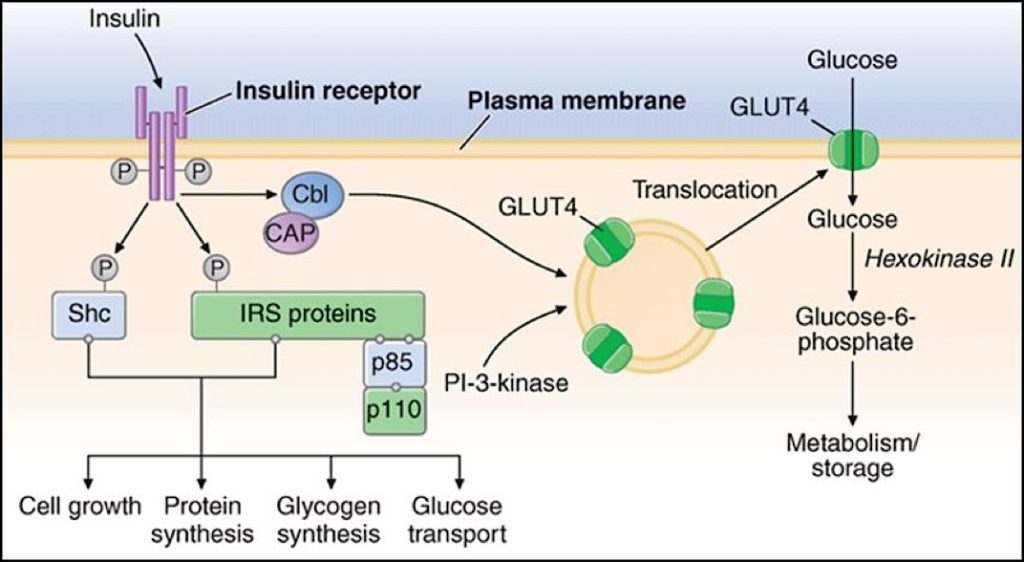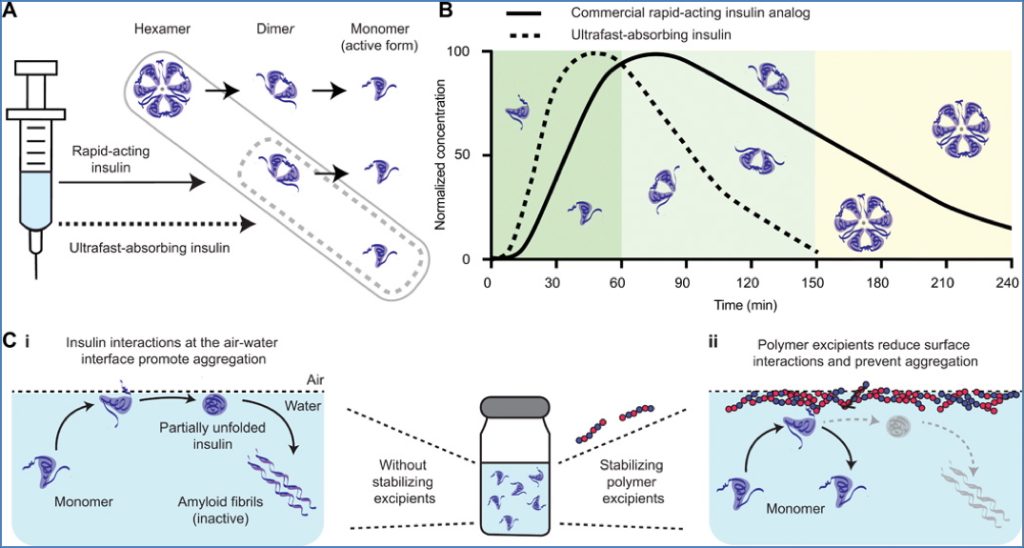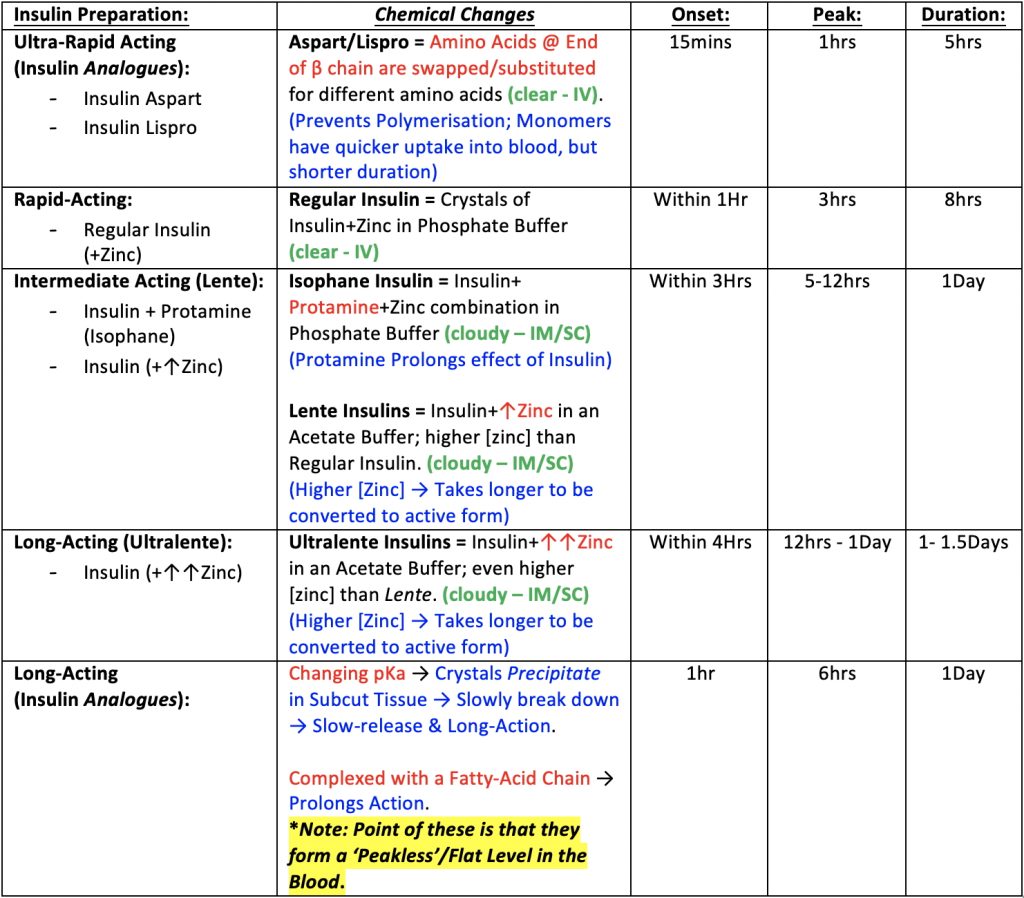Table of Contents
Overview – Insulin Drugs
Insulin drugs are essential in the management of diabetes mellitus, especially type 1 diabetes, where insulin deficiency is absolute. They are also used in advanced type 2 diabetes when oral hypoglycaemic agents fail. These preparations mimic or enhance endogenous insulin to promote glucose uptake and anabolic metabolism, helping to regulate blood sugar levels and prevent long-term complications.
Definition
Insulin drugs are synthetic or recombinant analogues of the pancreatic hormone insulin. They facilitate glucose uptake, especially in insulin-sensitive tissues such as skeletal muscle and adipose tissue.
Sources of Insulin
- Animal-derived (old): Extracted from bovine or porcine pancreas
- Human insulin (modern): Produced via recombinant DNA technology
Clinical Uses
- Type 1 Diabetes Mellitus – Mainstay of therapy
- Type 2 Diabetes Mellitus – Used when lifestyle and oral therapies fail
Mechanism of Action
- Stimulates GLUT4 translocation to cell membranes in muscle and adipose tissue → ↑ glucose uptake from the blood
- Anabolic hormone effects:
- ↑ Glycogen synthesis (glycogenesis)
- ↑ Fatty acid synthesis (lipogenesis)
- ↑ Amino acid uptake
- ↓ Proteolysis
- ↓ Lipolysis
- ↓ Gluconeogenesis

Side Effects
- Allergic reactions (rare with human insulin)
- Hypoglycaemia (due to overdose or missed meals)
Types of Insulin Preparations

Source: https://www.science.org/doi/abs/10.1126/scitranslmed.aba6676
Ultra-Rapid Acting Insulin Analogues (Clear – IV possible)
- Examples: Insulin Aspart, Insulin Lispro
- Chemical change: Substitution of amino acids → prevent polymerisation (exist as monomers)
- Onset: 15 mins
- Peak: 1 hr
- Duration: 5 hrs
Rapid-Acting (Clear – IV possible)
- Example: Regular Insulin
- Form: Insulin + low zinc in phosphate buffer
- Onset: Within 1 hr
- Peak: 3 hrs
- Duration: 8 hrs
Intermediate-Acting (Cloudy – SC/IM only)
- Examples: Isophane Insulin (Insulin + Protamine), Lente (Insulin + medium zinc)
- Mechanism: Protamine or zinc delays conversion to active form
- Onset: Within 3 hrs
- Peak: 5–12 hrs
- Duration: ~24 hrs
Long-Acting (Cloudy – SC/IM only)
- Ultralente: High zinc concentration delays activation
- Onset: 4 hrs
- Peak: 12–24 hrs
- Duration: 1–1.5 days
- Long-acting analogues (e.g., Insulin Glargine, Detemir):
- Altered pKa or fatty-acid chain → subcutaneous crystal precipitation
- Forms a “peakless” flat profile
- Onset: 1 hr
- Peak: ~6 hrs
- Duration: ~24 hrs

Route of Administration
- Clear preparations: Water-soluble → can be given IV
- Cloudy preparations: Insoluble → only suitable for SC or IM injection
Summary – Insulin Drugs
Insulin drugs are critical for controlling hyperglycaemia in diabetes, with multiple formulations designed to match physiologic insulin profiles. They vary in onset, peak, and duration depending on molecular modifications such as zinc content, protamine binding, or amino acid substitutions. For a broader context, see our Pharmacology & Toxicology Overview page.